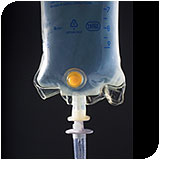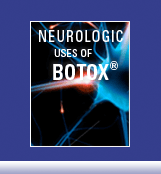 Tysabri is currently offered at Bellaire Neurology to appropriate patients of Dr. Loftus' as well as other patients from other MS physicians whose patients prefer the convenience of an infusion suite in Bellaire Texas (west Houston).
Tysabri is currently offered at Bellaire Neurology to appropriate patients of Dr. Loftus' as well as other patients from other MS physicians whose patients prefer the convenience of an infusion suite in Bellaire Texas (west Houston).
Tysabri (formerly known as Antegren) or Natalizumab was granted FDA approval for the treatment of relapsing forms of MS. Tysabri falls into a new class of compounds called selective adhesion molecule blockers or SAM blockers. Binding to adhesion molecules is an important step in white cells crossing arterial blood vessels and entering into the brain to attack myelin in MS.
The medication is given monthly in a physician's office by IV. The IV itself is given over one hour and then the patient needs to be observed for one hour. After initial approval, the drug was suspended from sale for almost 2 years and has now been approved again for the last 18 months.
During a placebo controlled trial performed primarily in Europe called the AFFIRM trial, patients with MS who were either not disabled or mildly disabled (not needing a cane to walk) were randomized to active drug or placebo in a 2 to 1 ratio. To be in this trial, you also had to have had 2 MS exacerbations in the prior 2 years. The chance of having a relapse in the following year was reduced from the roughly 4 out of 5 patients to roughly one of 4 patients or 68%. Hospital admissions of any type decreased 40% and hospital admissions for MS exacerbations decreased 60%. The chance of receiving IV steroids during the year decreased 70%. The two year data is equally impressive. Clinical relapses reduced 68%, MRI relapses reduced 83%, and Gad enhancing relapses reduced 92%. About 1 in 6 patients had sustained progression on their EDSS compared to 1 in 3 on patients in placebo.
A second trial called the Sentinel trial looked at adding Antegren to patients who were on Avonex but continuing to have relapses. This trial was performed mostly in the United States. In this case, relapses were reduced by 55%. There were, however, 2 cases of PML in patients on combined therapy during an extension of the original study. These occured between 2 and 3 years of treatment. For this reason, the medication was pulled from the market. With a further review of all tysabri data, the drug has been released again. Since re-release of the medication, we are now seeing additional cases of PML. The overall risk has been unchanged with a rate of 1 per 1000 patient years beginning in year two. At this rate, we would expect 10 cases to be reported from July 2008 to July 2009. As of December 2008, there have been 3 additional cases.
Dr. Loftus’ current thoughts on tysabri is the following. It is clearly the most powerful drug available to block relapses. We know there is a risk of PML (a potentially lethal side effect) of presumably less than 1 in 1000 in 2-3 years. We do not, however, know what will the risk be in 5 or 10 years. For now, I will use tysabri in those patients that are doing poorly on standard first line medications. Patients intolerant to standard therapy will also be candidates. Patients will have to understand that if they get new symptoms, MRI brain followed by lumbar puncture will probably be fairly standard. Importantly, Tysabri provides a lesson for all future MS therapies that depend upon broad immunosuppression to achieve their effect. Given HIV disease leads Tcell depletion and then leads to a variety of CNS problems, these side effects should not be a major surprise. Only with time will we know how common they are.
More narrowly targeted treatments like T-cell vaccine are unlikely to have the same treatment issues.



